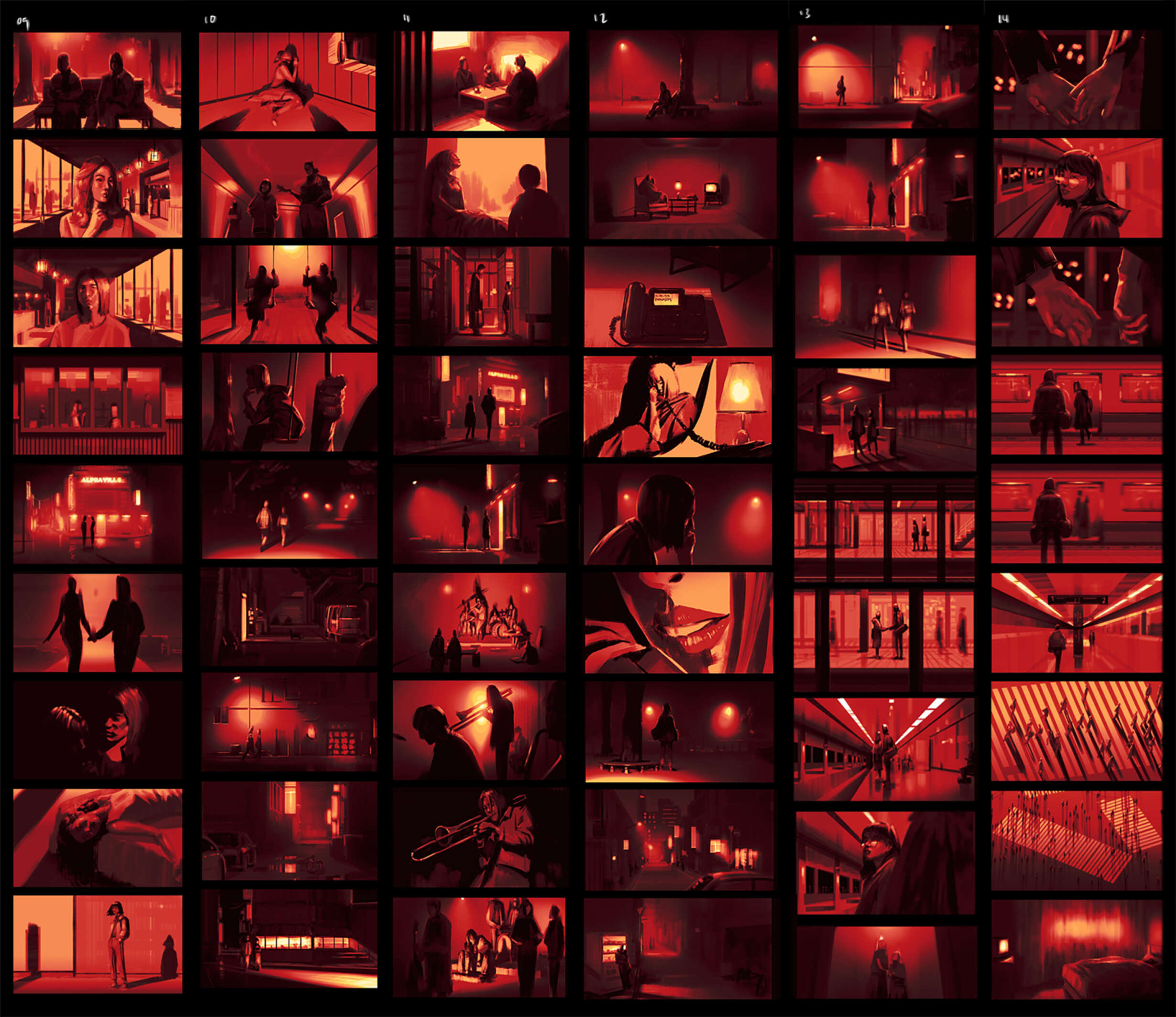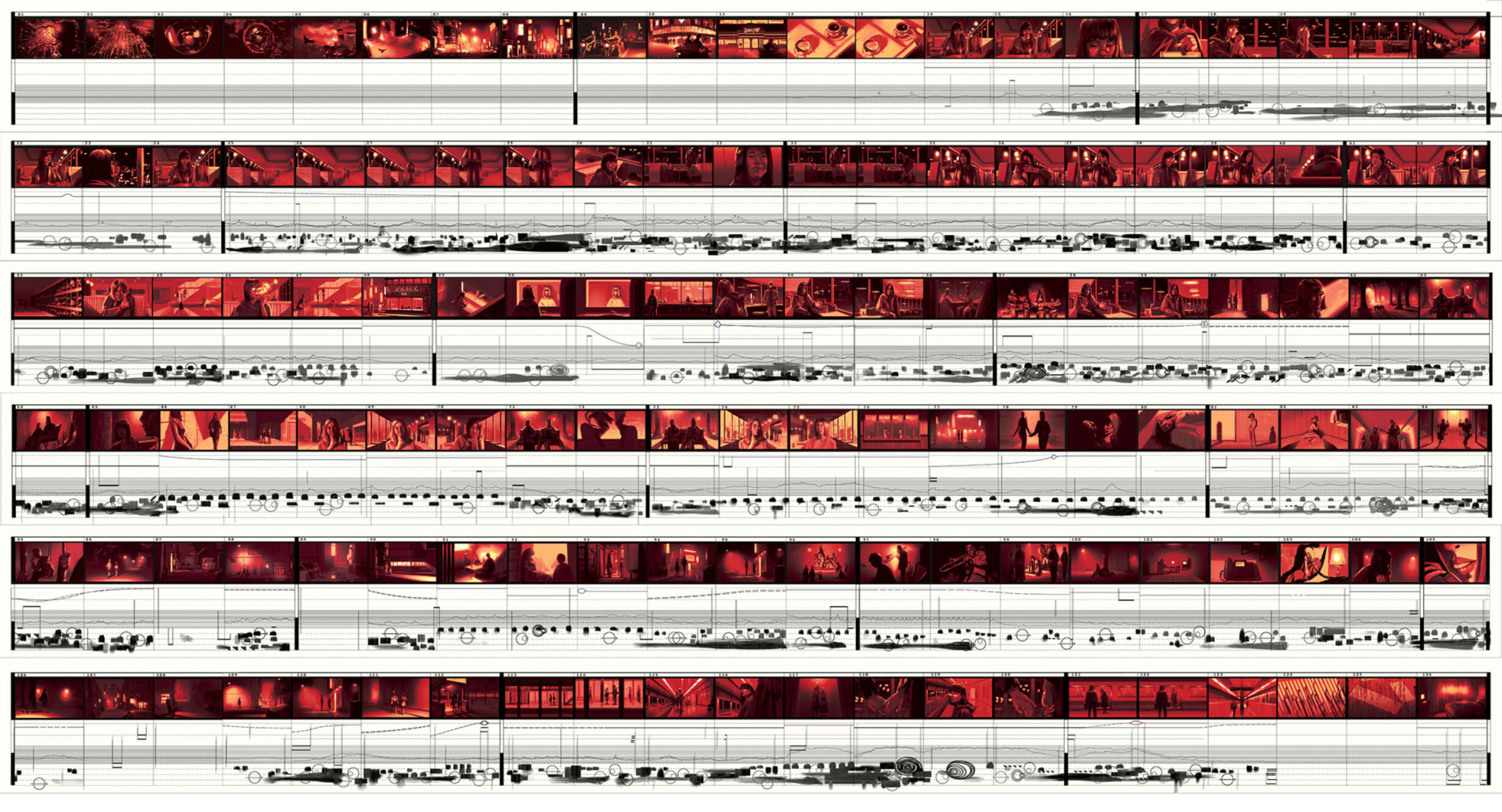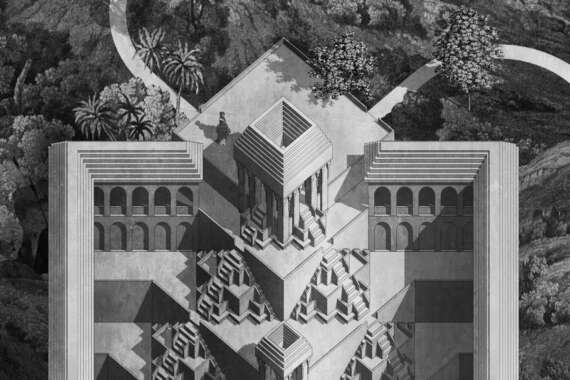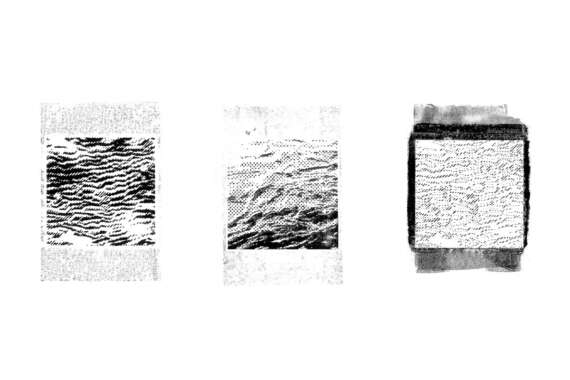The Architectonic of Loneliness: New Cinematics for Design & Representation
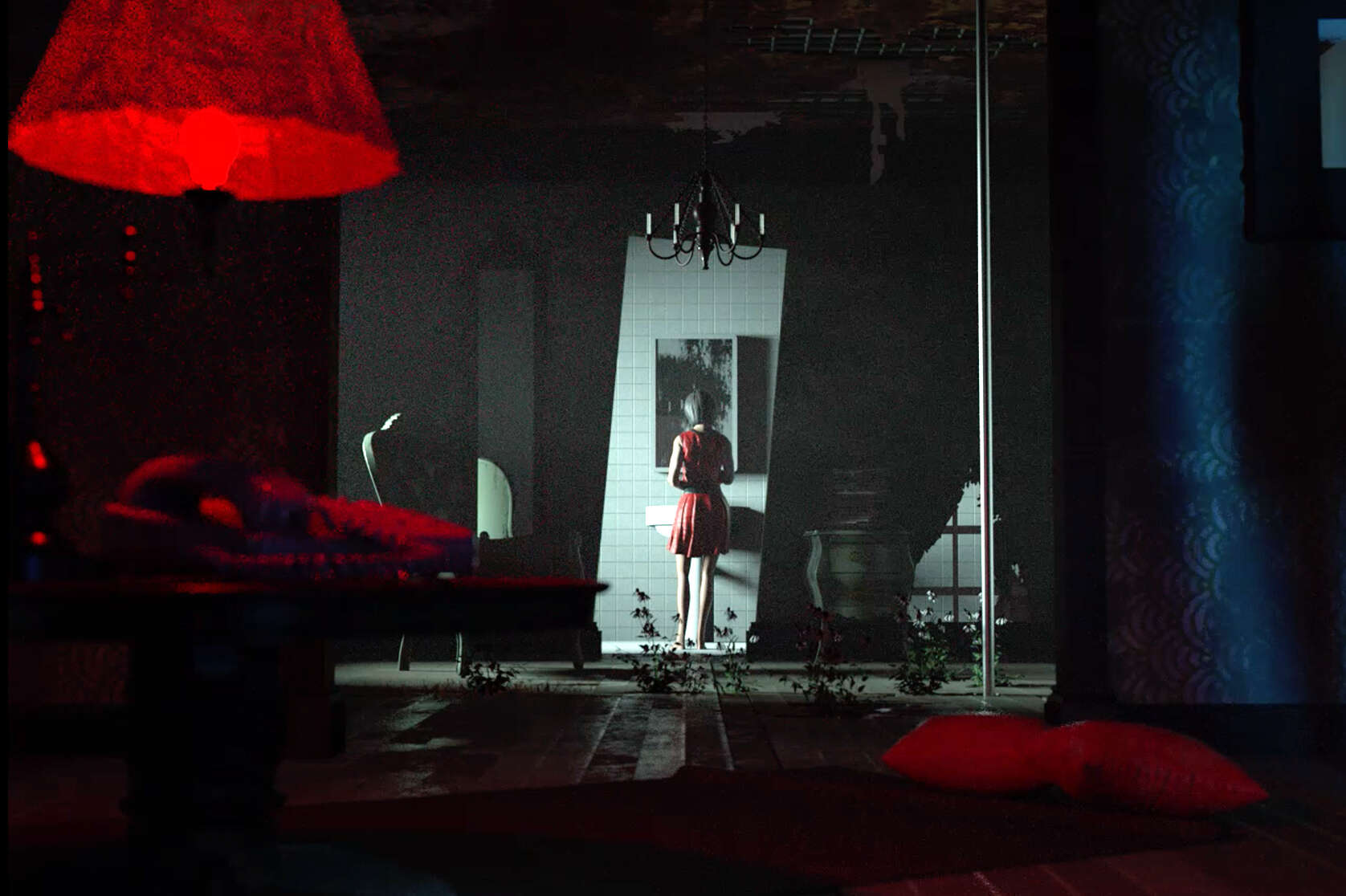
The Architectonic of Loneliness uses a narrative script as the basis for design exploration: After Dark by Haruki Murakami. A sequence of events are depicted in a format of storyboarding. Then, a system of notations are invented in order to transcribe the phenomenological counterpart of architectural elements. A wall becomes the texture of lust, a door transforms into the geometry for terror, windows are the surfaces of longing, and dining tables the extrusions of loneliness. In doing so, the thesis engages in cinematic practices; two individuals’ mental spaces are projected into physical spaces that exists in parallel to objective reality. In the short film, architecture becomes the projection screen for emotion.
At the heart of this thesis lies a fascination with storytelling and its
fundamental power to weave the structure of human relationships
with architectonic relationships. Consequently, this thesis stipulates
that architecture is ultimately a motivation of love and death.







